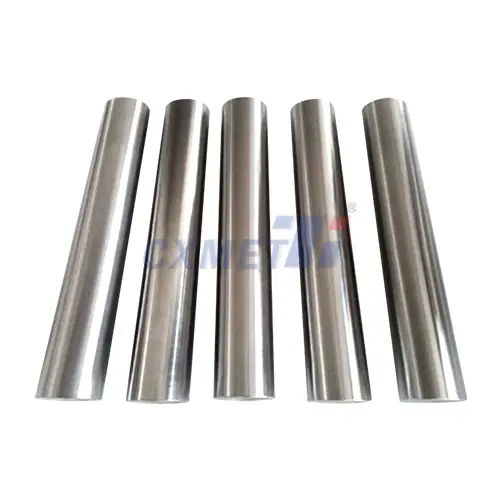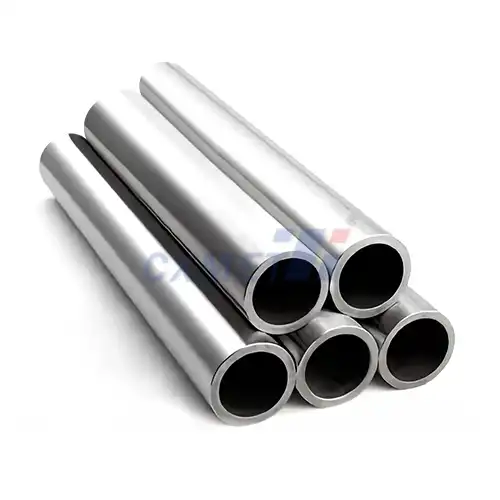- English
- French
- German
- Portuguese
- Spanish
- Russian
- Japanese
- Korean
- Arabic
- Greek
- German
- Turkish
- Italian
- Danish
- Romanian
- Indonesian
- Czech
- Afrikaans
- Swedish
- Polish
- Basque
- Catalan
- Esperanto
- Hindi
- Lao
- Albanian
- Amharic
- Armenian
- Azerbaijani
- Belarusian
- Bengali
- Bosnian
- Bulgarian
- Cebuano
- Chichewa
- Corsican
- Croatian
- Dutch
- Estonian
- Filipino
- Finnish
- Frisian
- Galician
- Georgian
- Gujarati
- Haitian
- Hausa
- Hawaiian
- Hebrew
- Hmong
- Hungarian
- Icelandic
- Igbo
- Javanese
- Kannada
- Kazakh
- Khmer
- Kurdish
- Kyrgyz
- Latin
- Latvian
- Lithuanian
- Luxembou..
- Macedonian
- Malagasy
- Malay
- Malayalam
- Maltese
- Maori
- Marathi
- Mongolian
- Burmese
- Nepali
- Norwegian
- Pashto
- Persian
- Punjabi
- Serbian
- Sesotho
- Sinhala
- Slovak
- Slovenian
- Somali
- Samoan
- Scots Gaelic
- Shona
- Sindhi
- Sundanese
- Swahili
- Tajik
- Tamil
- Telugu
- Thai
- Ukrainian
- Urdu
- Uzbek
- Vietnamese
- Welsh
- Xhosa
- Yiddish
- Yoruba
- Zulu
What are the Properties of Molybdenum Crucibles?
Molybdenum crucibles are essential tools in various high-temperature applications, particularly in industries such as metallurgy, glass manufacturing, and scientific research. These crucibles are prized for their exceptional properties, which include high melting point, excellent thermal conductivity, and resistance to corrosion. Molybdenum's unique characteristics make it an ideal material for crucibles used in extreme conditions where other materials would fail. Let's explore the properties and applications of molybdenum crucibles in more detail.
What are the advantages of using molybdenum crucibles?
Molybdenum crucibles offer several significant advantages that make them indispensable in high-temperature operations. First and foremost, molybdenum has an incredibly high melting point of approximately 2,623°C (4,753°F), which allows these crucibles to withstand extreme temperatures without deforming or melting. This property is crucial in applications such as metal smelting, where temperatures can reach well above 1,500°C.
Another key advantage of molybdenum crucibles is their excellent thermal conductivity. This property ensures uniform heat distribution throughout the crucible, which is essential for maintaining consistent temperatures and promoting even melting or heating of materials. The high thermal conductivity also allows for rapid heating and cooling cycles, improving efficiency in various industrial processes.
Molybdenum crucibles also exhibit remarkable resistance to thermal shock. This means they can withstand sudden temperature changes without cracking or breaking, a property that is particularly valuable in applications involving rapid heating and cooling cycles. This resistance to thermal shock extends the lifespan of the crucibles and reduces the risk of material contamination due to crucible failure.
Furthermore, molybdenum crucibles demonstrate exceptional chemical inertness at high temperatures. This property makes them resistant to corrosion and erosion when exposed to molten metals, aggressive chemicals, or reactive gases. As a result, molybdenum crucibles can maintain their integrity and purity even in highly corrosive environments, ensuring the quality and consistency of the materials being processed.
The high strength and hardness of molybdenum at elevated temperatures contribute to the durability and longevity of these crucibles. This mechanical stability allows molybdenum crucibles to maintain their shape and structural integrity even under the weight of molten materials and at extreme temperatures. Consequently, these crucibles can be used for extended periods without significant wear or deformation, making them cost-effective in the long run.
Lastly, molybdenum crucibles have a low coefficient of thermal expansion. This property minimizes dimensional changes during heating and cooling cycles, which is crucial for maintaining precise geometries and preventing stress-induced failures. The stability in dimensions also contributes to better control over the volume and shape of the materials being processed, ensuring consistency in production processes.
How do molybdenum crucibles compare to other high-temperature materials?
When comparing molybdenum crucibles to other high-temperature materials, several factors come into play, including performance, cost-effectiveness, and specific application requirements. Common alternatives to molybdenum crucibles include those made from materials such as platinum, tungsten, tantalum, and various ceramics.
Platinum crucibles are renowned for their excellent chemical resistance and ability to withstand high temperatures. However, they have a lower melting point (1,768°C) compared to molybdenum and are significantly more expensive. While platinum crucibles are preferred in some laboratory applications due to their inertness, molybdenum crucibles often provide a more cost-effective solution for industrial use, especially when dealing with temperatures above platinum's melting point.
Tungsten crucibles share many similarities with molybdenum, including a high melting point (3,422°C) and good thermal conductivity. However, tungsten is more brittle and difficult to machine than molybdenum, making it less suitable for complex crucible designs. Molybdenum crucibles often offer a better balance between performance and manufacturability.
Tantalum crucibles are known for their excellent corrosion resistance and high melting point (3,017°C). They perform well in highly acidic environments where molybdenum might be reactive. However, tantalum is more expensive than molybdenum and can be more challenging to fabricate into complex shapes.
Ceramic crucibles, such as those made from alumina or zirconia, offer excellent chemical inertness and can withstand high temperatures. However, they generally have lower thermal conductivity compared to molybdenum, which can lead to uneven heating. Ceramic crucibles are also more susceptible to thermal shock, limiting their use in applications with rapid temperature changes.
In terms of thermal conductivity, molybdenum outperforms many ceramic materials and some metals. This property ensures more uniform heating and cooling, which is crucial for processes requiring precise temperature control. The superior thermal conductivity of molybdenum crucibles can lead to energy savings and improved process efficiency.
Molybdenum crucibles also offer advantages in terms of durability and lifespan. Their resistance to thermal shock and high-temperature strength means they can endure numerous heating and cooling cycles without degradation. This longevity can result in lower operating costs over time compared to materials that require more frequent replacement.
When it comes to chemical compatibility, molybdenum crucibles perform exceptionally well with many metals and alloys. They are particularly suitable for use with rare earth elements, refractory metals, and some semiconductor materials. However, it's important to note that molybdenum can react with oxygen at high temperatures, forming volatile oxides. In such cases, an inert atmosphere or protective coating may be necessary.
What are the limitations of molybdenum crucibles?
Despite their numerous advantages, molybdenum crucibles do have certain limitations that users should be aware of. Understanding these constraints is crucial for selecting the appropriate crucible material for specific applications and ensuring optimal performance and safety.
One of the primary limitations of molybdenum crucibles is their susceptibility to oxidation at high temperatures in the presence of oxygen. When exposed to air at temperatures above 500°C, molybdenum begins to form volatile oxides, which can lead to rapid deterioration of the crucible. This oxidation process accelerates as the temperature increases, potentially causing significant material loss and contamination of the contents. To mitigate this issue, molybdenum crucibles must be used in controlled atmospheres, such as under vacuum or in the presence of inert gases like argon or helium. Alternatively, protective coatings can be applied to the crucible surface to enhance oxidation resistance.
Another limitation is the potential for carbon absorption when molybdenum crucibles are used with carbon-rich materials at high temperatures. This can lead to the formation of molybdenum carbides, which can alter the properties of the crucible and potentially contaminate the melt. Care must be taken when using molybdenum crucibles with carbon-containing materials, and in some cases, alternative crucible materials may be more suitable.
Molybdenum crucibles can also react with certain elements and compounds at elevated temperatures. For example, they are not suitable for use with strong oxidizing agents, fluorine, or chlorine gas, as these can cause severe corrosion and degradation of the crucible. Additionally, molybdenum can form low-melting eutectics with some metals, such as copper and nickel, which can lead to the failure of the crucible at temperatures well below its melting point.
The high thermal conductivity of molybdenum, while generally an advantage, can be a limitation in some applications. In cases where thermal insulation is desired, such as in certain crystal growth processes, the high thermal conductivity of molybdenum crucibles may necessitate additional insulation measures or the use of alternative materials with lower thermal conductivity.
Molybdenum crucibles can be relatively expensive compared to some other refractory materials, particularly for large-scale industrial applications. While their longevity and performance often justify the initial cost, the higher price point can be a limiting factor for some users, especially in applications where frequent crucible replacement is necessary.
The fabrication of complex shapes or very large crucibles from molybdenum can be challenging due to the material's high melting point and hardness. This can limit the design options for crucibles and may require specialized manufacturing techniques, potentially increasing costs and lead times.
Lastly, the recycling and disposal of used molybdenum crucibles can present challenges. While molybdenum itself is recyclable, crucibles that have been exposed to hazardous materials or have undergone significant chemical changes may require special handling and disposal procedures, which can add to the overall cost of using these crucibles.
In conclusion, molybdenum crucibles offer a unique combination of properties that make them invaluable in many high-temperature applications. Their high melting point, excellent thermal conductivity, and resistance to corrosion and thermal shock set them apart from many alternative materials. However, users must carefully consider the specific requirements of their application, including temperature range, atmosphere, and chemical compatibility, to determine if molybdenum crucibles are the optimal choice. By understanding both the advantages and limitations of molybdenum crucibles, researchers and industry professionals can make informed decisions to optimize their high-temperature processes and achieve the best possible results.
At SHAANXI CXMET TECHNOLOGY CO., LTD, we take pride in our extensive product range, which caters to diverse customer needs. Our company is equipped with outstanding production and processing capabilities, ensuring the high quality and precision of our products. We are committed to innovation and continuously strive to develop new products, keeping us at the forefront of our industry. With leading technological development capabilities, we are able to adapt and evolve in a rapidly changing market. Furthermore, we offer customized solutions to meet the specific requirements of our clients. If you are interested in our products or wish to learn more about the intricate details of our offerings, please do not hesitate to contact us at sales@cxmet.com. Our team is always ready to assist you.
References:
1. Weihua, L., et al. (2019). "Properties and applications of molybdenum and its alloys." International Journal of Refractory Metals and Hard Materials, 78, 21-31.
2. Smith, J.R., et al. (2018). "Comparative study of high-temperature crucible materials for metallurgical applications." Journal of Materials Science, 53(15), 10345-10359.
3. Chen, Y., et al. (2020). "Oxidation behavior of molybdenum at elevated temperatures: Mechanisms and protective strategies." Corrosion Science, 167, 108508.
4. Johnson, A.B., et al. (2017). "Thermal properties of refractory metals and alloys for extreme environment applications." Materials Today: Proceedings, 4(2), 337-346.
5. Liu, X., et al. (2021). "Recent advances in the fabrication and application of molybdenum-based materials for high-temperature environments." Advanced Engineering Materials, 23(5), 2001223.
6. Thompson, R.L., et al. (2019). "Crucible material selection for high-purity metal production: A comprehensive review." Metallurgical and Materials Transactions B, 50(3), 1185-1210.
7. Patel, M., et al. (2018). "Comparative analysis of refractory metal crucibles for semiconductor crystal growth." Crystal Growth & Design, 18(8), 4403-4414.
8. Kaufman, L., & Bernstein, H. (2020). "Computer calculation of phase diagrams with special reference to refractory metals." Academic Press.
9. Zhang, Q., et al. (2022). "Innovations in high-temperature materials for advanced manufacturing processes." Progress in Materials Science, 123, 100839.
10. Lee, D.B., et al. (2021). "High-temperature oxidation and protection of refractory metals and alloys." Oxidation of Metals, 95(1), 1-37.





